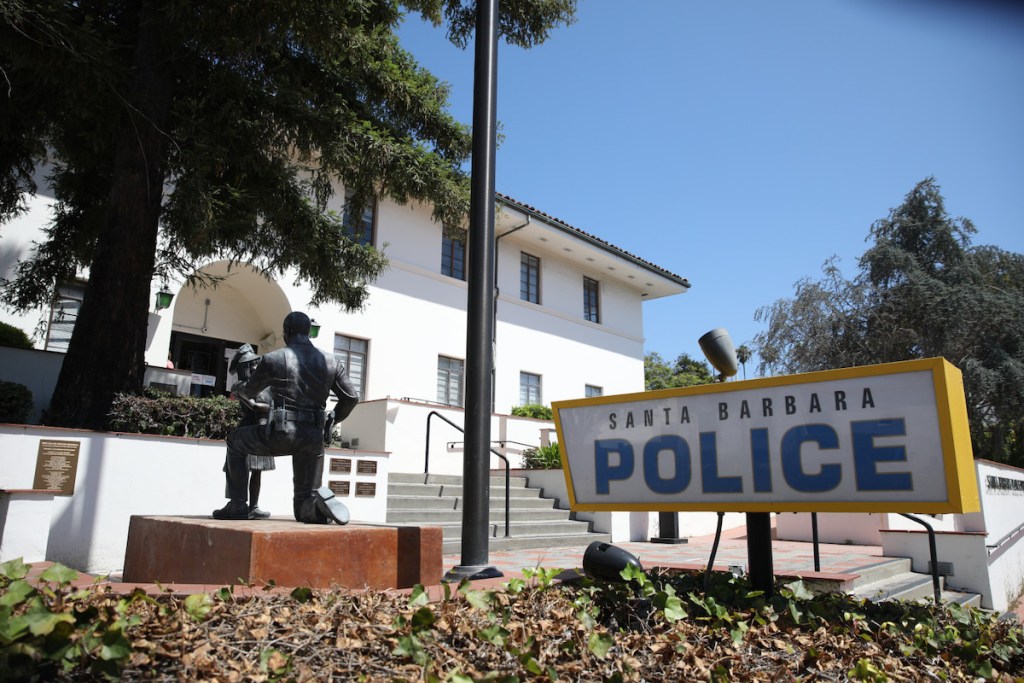After some quietly momentous deliberations, an ordinance designed to transform City Hall’s existing Fire and Police Commission into a civilian review board for the Santa Barbara Police Department passed the City Council’s Ordinance Committee by a vote of 2-1. Santa Barbara’s newest Chief of Police Kelly Ann Gordon showed up to bless the legislative handiwork of Barbara Andersen, who will function as the city’s de facto independent oversight officer assuming the measure wins the support of the full council. “This is, in fact, historic,” declared Chief Gordon in perhaps her most extensive public remarks since assuming the reins from her predecessor, interim chief Barney Melekian. By Santa Barbara standards, Gordon’s assessment is correct. As Andersen put it, “Never before has the city created this level of civilian oversight.”
Although the ordinance is decidedly not what members of the Community Formation Commission — created in the wake of the George Floyd murder two years ago to investigate models of police oversight appropriate for Santa Barbara — had initially envisioned or hoped for, former chair Gabe Escobedo and Louisa Wood both gave the measure their blessings. “This is progress,” they both stated. But both also urged the Ordinance Committee to endorse a handful of changes they said would make the ordinance more faithful to their committee’s initial recommendations. Most of the proposed changes are relatively minor; but one — which would effectively exclude any law enforcement officer who served in Santa Barbara County in the past seven years — is decidedly not.
This is one of the issues, Andersen stated, that falls into the category of “issues of robust discussion” still to be resolved.
As proposed, the new ordinance would transform the DNA of the city’s existing five-member Fire and Police Commission — typically where dance permits are issued and towing franchises are awarded — and remake it as a police oversight body that would meet in City Council Chambers. In addition, those meetings would be televised. If and when this ordinance is approved by the whole council, members of the existing Fire and Police Commission would have to resign and new appointees would be selected. These would be picked by the council based on the new mission.
The new commission would review the number and type of complaints — both internal and from outside the police department — and whatever action was subsequently taken. It would also review the number of officers disciplined and the level of discipline imposed. The commission would also discuss individual investigations and officer-involved shootings with the chief once those investigations are disclosable. The commissioners will not have access, however, to the contents of those internal investigations, nor will they render recommendations on the level of discipline to be administered. To the extent certain department practices became the subject of an audit — for example, whether Latino motorists are disproportionately targeted for traffic stops — that too could become grist for the commission’s mill.
It will fall to Andersen, a high-ranking executive in the City Administrator’s office, to assume the function of independent review officer. As such, she will have access to the internal investigation files.
Sign up for Indy Today to receive fresh news from Independent.com, in your inbox, every morning.
The Community Formation Commission had recommended the creation of a totally new commission with anywhere from seven to nine members. A separate independent review officer would have been hired as well — either as staff or contracted, functioning within the auspices of the Administrator’s offices, but apart from it as well.
A key issue raised by Councilmembers Kristen Sneddon and Oscar Gutierrez is the extent to which the new commission would, in fact, be independent enough to oversee the police department and to what extent it might appear compromised in its ability to do so. Gutierrez asked Andersen a series of questions about her training in law enforcement and racial sensitivity. She spent much of the past 20 years, she responded, doing emergency management working with fire and police departments in moments of crisis, and she also worked in the field of anti-terrorism and national security. She’d undergone implicit bias and white supremacy training as well. Sneddon expressed concerns that Andersen’s role was “a little bit overly vague” and could become blurry over time. Sneddon also worried that if any law enforcement officers who worked for any agency in the county were allowed to serve on the commission, it might make members of the public — or communities more inclined to question law enforcement — apt to wonder if the former cops held undue sway. “I don’t want this to be undermined by public perception there’s anybody on it that can skew the results,” she said. The ordinance as written bars any former sworn officers from serving if they’d ever had a serious misconduct charge against them sustained.
Former interim chief Melekian took to the podium and expressed support for the ordinance as drafted. He extolled the virtues of what he described as “collaborative reform,” which he’d helped midwife for the Las Vegas Police Department. Collaborative reform achieved real change in departmental culture, he argued. Police oversight achieved just that: oversight. To get real reform, he said, real collaboration was necessary.
Everyone speaking took pains to stress the push for civilian oversight was not prompted by any heinous misconduct by Santa Barbara police officers — described by the new chief as “phenomenal public servants” — but by a desire to ensure they never happen.
Support the Santa Barbara Independent through a long-term or a single contribution.

